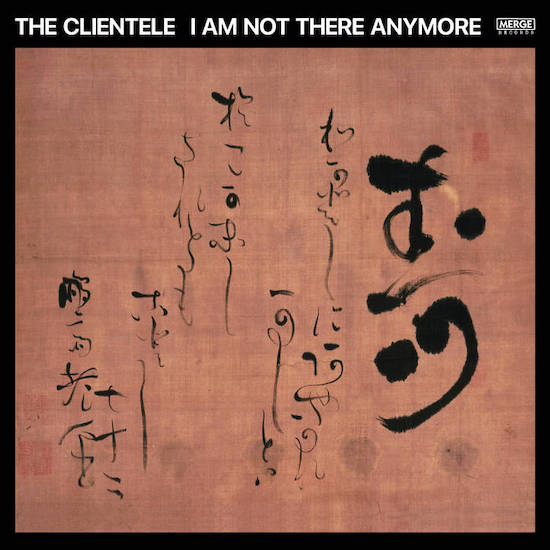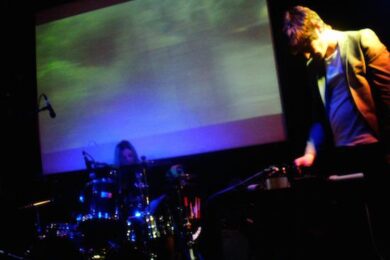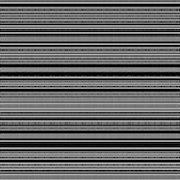Together for more than thirty years, The Clientele are as consistent as their music is airy, wistful and melodic. As devotees of what could be described as ‘chamber pop’, singer Alasdair MacLean, bassist James Hornsey and drummer Mark Keen know what they like, and have a small but devoted fanbase who hang on their regular releases. However, with I Am Not There Anymore they have stepped up their game: MacLean explains, disarmingly, that they “bought a computer”. This late discovery of twenty-first-century technology has opened up new possibilities, and gives their music deeper, richer and weirder textures. Their tenth album is ambitious and alluring, worming its way remorselessly into your brain.
With nineteen tracks, the album has the scale and structure of a 1960s rock opera but the tone is gentle, nostalgic and distorted by time and perception. According to MacLean, it’s about childhood. He writes about memories that are close yet impossibly far away, identity floating somewhere in between. Effective use is made of spoken word sections from Jessica Griffin of The Would-Be-Goods. On ‘Conjuring Summer In’, for example, she reads lines by Vernon Scannell about sadness and loss over a repeating piano sample. The combination of her distinctive RP voice and meticulously constructed soundscapes recalls Delia Derbyshire and Barry Bermange’s Inventions for Radio – Dreams album. On tracks such as the lovely ‘Blue Over Blue’, with its clockwork percussion, MacLean writes about his own memories, such as being lost in the woods with his son. The album is punctuated with a series of short instrumentals loaded with reflective atmosphere.
The opening track, ‘Fables of the Silverlink’, is an eight-and-half minute mini-opera in itself with its multiple sections, including soft, sad vocals from MacLean, eerie childlike choruses, reversed hand clap percussion, and ‘Strawberry Fields’ strings. ‘Lady Grey’, with its simple, nagging piano melody and floating cello, is about images of the past that repeat in the mind years later. The song, which is almost undateable and could have been written in the mid-1960s, is a psych classic out of time. Its instrumentation would not be out of place on a track such as Keith West’s 1967 bubblegum masterpiece ‘Excerpt from a Teenage Opera’. It is a perfectly crafted piece tribute to another time, but it has a personality and life of its own too. ‘Lady Grey’ is immediately followed by ‘Dying in May’, a ‘Revolution No.9’-style coda with its reversed percussion samples, strings, bells and repeated refrain “Oh Maria! Won’t you go back to the flowers?” The two songs together are a calling card, irresistible to those who love this type of music.
The Clientele, like many bands that manage to hold a career together over such a long period, know exactly what they are doing and deliver it exceptionally well. I Am Not There Anymore is a complete world, with an unmistakable musical identity. Despite the strong influence that can detected in the band’s style – Smile via Penguin Café Orchestra, The High Llamas and contemporary classical ensemble North Sea Radio Orchestra perhaps – few others are so committed to making music that sounds like this. After decades building up to it, The Clientele have produced what is probably their finest, most enjoyable record.









